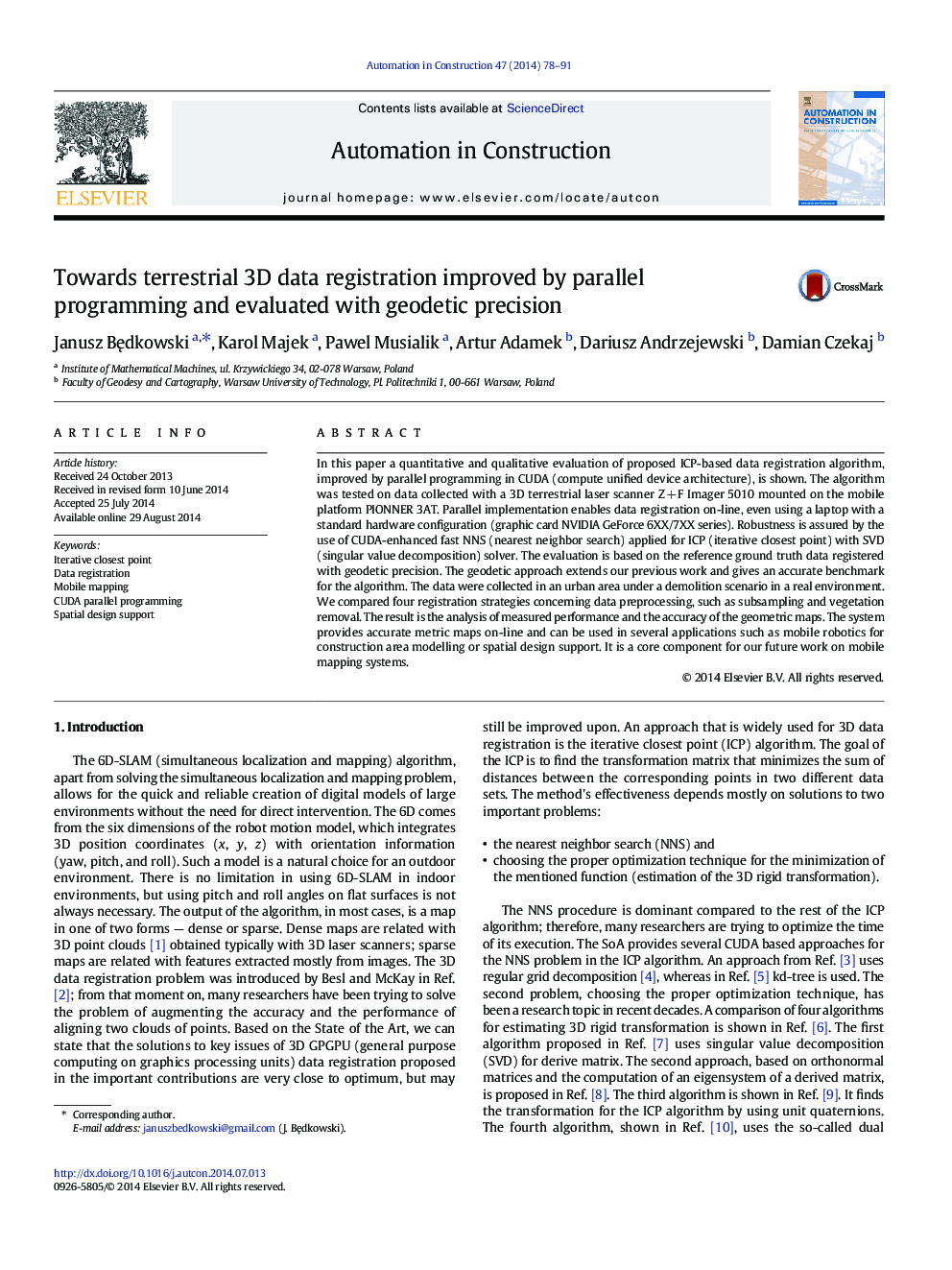| Article ID | Journal | Published Year | Pages | File Type |
|---|---|---|---|---|
| 246440 | Automation in Construction | 2014 | 14 Pages |
•The terrestrial data registration is evaluated quantitatively with geodetic precision.•Several registration parameters were tested to obtain better performance and accuracy.•The parallel programming implementation applied for iterative closest point is demonstrated.•The performance of modern GPUs is shown.
In this paper a quantitative and qualitative evaluation of proposed ICP-based data registration algorithm, improved by parallel programming in CUDA (compute unified device architecture), is shown. The algorithm was tested on data collected with a 3D terrestrial laser scanner Z + F Imager 5010 mounted on the mobile platform PIONNER 3AT. Parallel implementation enables data registration on-line, even using a laptop with a standard hardware configuration (graphic card NVIDIA GeForce 6XX/7XX series). Robustness is assured by the use of CUDA-enhanced fast NNS (nearest neighbor search) applied for ICP (iterative closest point) with SVD (singular value decomposition) solver. The evaluation is based on the reference ground truth data registered with geodetic precision. The geodetic approach extends our previous work and gives an accurate benchmark for the algorithm. The data were collected in an urban area under a demolition scenario in a real environment. We compared four registration strategies concerning data preprocessing, such as subsampling and vegetation removal. The result is the analysis of measured performance and the accuracy of the geometric maps. The system provides accurate metric maps on-line and can be used in several applications such as mobile robotics for construction area modelling or spatial design support. It is a core component for our future work on mobile mapping systems.
